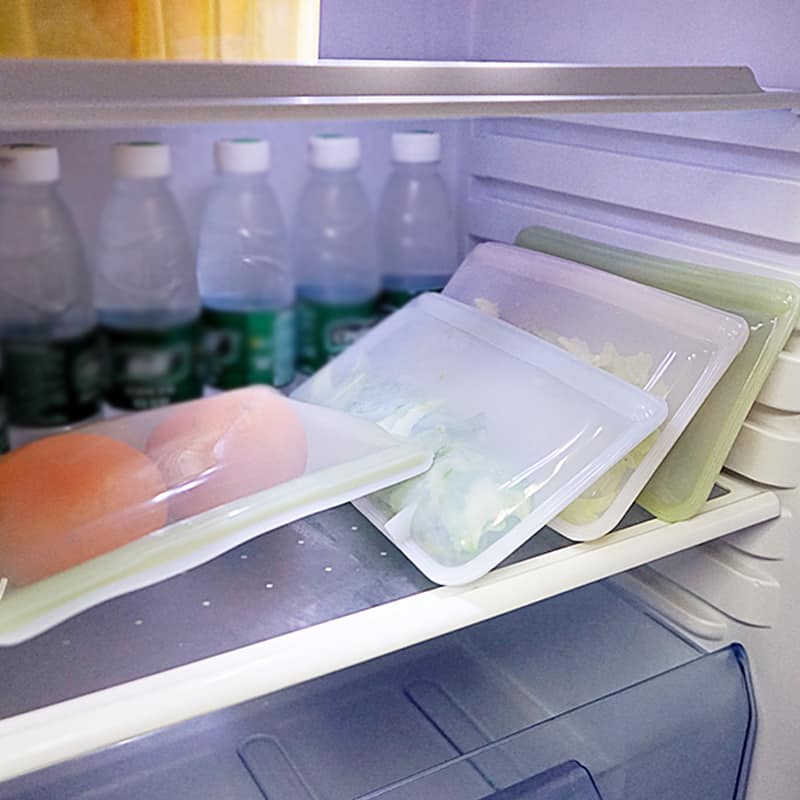How to distinguish food-grade silicone?
What is food grade silicone?
Food grade silicone is widely used in areas that come into direct contact with food because of its non-toxic and odorless, high temperature resistance, and strong chemical stability. However, some silicone products on the market may use industrial grade silicone to impersonate food grade materials, which poses a safety hazard. To identify food grade silicone products, it is necessary to make a comprehensive judgment from the following dimensions:
Non-toxic and odorless: Food grade silicone uses platinum catalyst (addition process), no harmful substances are added during the production process, and the finished product has no pungent odor. Industrial grade silicone (condensation process) often contains additives such as silicon micropowder and vulcanizer, which may release pungent chemical odors after heating.
High transparency and delicate touch: Food grade silicone raw materials are highly transparent, and the surface of the product is smooth and free of impurities; industrial grade silicone is mostly translucent or milky white, and there may be silicone oil layer separation or impurity particles.
Temperature resistance: Food-grade silicone can withstand extreme temperatures of -40℃ to 280℃, and will not deform or turn yellow when baked at high temperatures; the upper temperature resistance limit of industrial-grade silicone is usually 150℃-200℃, and it is easy to volatilize harmful gases and cause surface discoloration under high temperatures.
1. Third-party lab test
Food-grade silicone needs to pass both international and domestic certification systems, and consumers can verify it in the following ways:
The best way to tell if the silicone products are food grade is to test on the lab by Intertek or Bureau Veritas or SGS, TUV. So, most of the brands for the food contact brand products have certification about their goods.
There are many testing standards for Silicone that can be sold that are considered food grade.
For silicone food-grade products, there are many standards, one is LFGB food-grade, another is FDA food grade. Silicone products that pass either one of these tests are safe for human use.
FDA certification: The U.S. Food and Drug Administration standard requires that the migration of harmful substances such as heavy metals and plasticizers in silicone materials comply with the Code of Federal Regulations, Volume 21, Section 177.2600.
LFGB certification: German food-grade certification, testing items include sensory testing, total migration, heavy metal precipitation, etc.
REACH certification: EU Chemical Registration, Evaluation, Authorization and Restriction Regulations, which limits the content of 197 substances of very high concern (SVHC) in silicone.
Domestic standard basis in China:
GB4806.11-2016: China’s “National Food Safety Standard for Rubber Materials and Products for Food Contact”, which stipulates the limit values of heavy metals such as lead, cadmium, and mercury in silicone products, and requires migration tests that simulate food contact.
GB4806.1-2016: General requirements standard, covering tests such as physical properties (tensile strength, elongation), thermal stability, and immersion.
LFGB is standard mainly for Europe, while FDA (Food and Drug Administration) is the base level standard in the USA and Australia. Most countries have their own FDA standard, but the USA FDA is the most internationally applied. In terms of pricing, products in LFGB standard will be more expensive than FDA standard, so FDA is more widely used. This is because LFGB method of testing is more comprehensive and strict.
In the US & Australia, the minimum standard for silicone products is ‘FDA’ testing (Food & Drug Administration standard).
Silicone products sold in Europe except for Germany & France must meet the European Food Contact Regulations – 1935/2004/EC.
2. The easy way to know the LFGB food grade silicone.
As we all know, LFGB food-grade silicone is a high-standard food Grade silicone. There is the simplest way to know if the silicone products were made with LFGB material.
Both hands pull hard on both sides of the silicone products and focus on one place. If there turns white, it is FDA food Grade silicone products or ordinary silicone. If there is no white, it is LFGB food Silicone products. Of course, you can confirm it is Food Grade Silicone.
Odor test:
Put the silicone product close to the tip of your nose. If you smell a pungent odor, it is not food grade; food grade silicone should not have any peculiar smell.
Stretching test:
Stretch the edge of the silicone product and observe whether the stretched area turns white. Food grade silicone remains transparent after stretching, while industrial grade silicone tends to turn white when stretched.
High temperature test:
Put a small piece of silicone sample in an oven and bake at 200℃ for 30 minutes. Food grade silicone does not deform or turn yellow, while industrial grade silicone may produce a burnt smell or surface coking.
Immersion test:
Soak the silicone sample in 60℃ edible oil for 24 hours to observe whether it swells, changes color or has peculiar smell. Food grade silicone should maintain physical and chemical stability.
Certification document verification:
Merchants are required to provide third-party test reports, with a focus on verifying migration test data (such as hexane and ethanol extract content) and heavy metal test results.
More About Food Grade Silicone
Industry applications and risk warnings:
Food-grade silicone products are commonly found in bakeries, tea shops and other catering scenarios, and must meet the following conditions:
Compliant application scenarios:
Products that directly contact food (such as cake mold products) must use food-grade silicone.
Industrial-grade silicone can be used in non-food contact areas (such as decorative LOGO), but the material must be clearly marked.
Potential risk warning:
Industrial-grade silicone may contain heavy metals such as lead and cadmium, and long-term contact may cause skin allergies or respiratory diseases.
Poor-quality silicone may release endocrine disruptors such as bisphenol A and phthalates at high temperatures.
Purchase suggestions:
Give priority to brands that have passed FDA and LFGB certification, such as well-known manufacturers such as Z.S.R Group.
Avoid buying products that are 30% lower than the market average price. Such products may use recycled silicone or simplify production processes.
3. Conclusion
Identifying food-grade silicone products requires a combination of certification documents, physical testing, and sensory judgment. Consumers should give priority to brands that have passed international certification and require merchants to provide complete test reports. In the catering industry, using compliant food-grade silicone is not only a regulatory requirement, but also a core responsibility to protect consumer health.
In Z.S.R Group, we can develop your molded silicone products according to your request. Contact us for your food-grade silicone products.Z.S.R Group has rich experience in producing Silicone products with FDA or LFGB approved standards. We have the FDA register list number is 3011147430.
Technical Related
About Author: Z.S.R International Group
Z.S.R International Group(Hong Kong) co., Limited, is a one-stop supplier for molded silicone products and silicone products molding solution provider in the consumer products field. We offer OEM services from silicone product design to Silicone products contract manufacturing. We have the capability for custom silicone tooling, LSR(Liquid silicone Rubber) molded silicone products, solid silicone molded products, molded silicone multi-colored products. We also can custom molded silicone, custom molded LSR, custom molded dripping injection dispensing(co-injection) silicone multi-colored products.


